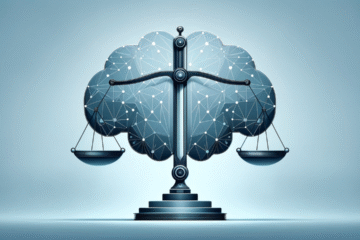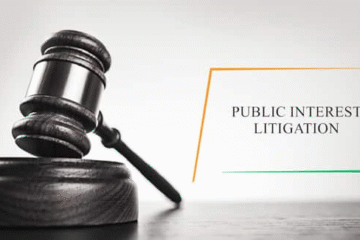
This article is written by Diptanshu Kashyap of B.B.A. LL. B of 1st Semester of Chanakya National Law University, Patna, Bihar, an intern under Legal Vidhiya.
ABSTRACT
This article examines the judicial interpretation of Article 14 of the Indian Constitution, which guarantees the fundamental right to equality. Article 14 encapsulates two interrelated concepts: equality before the law, a negative concept ensuring the absence of special privileges, and equal protection of the laws, a positive concept advocating affirmative action to eliminate inequalities. Judicial interpretations have significantly expanded the scope of Article 14, evolving doctrines such as reasonable classification, non-arbitrariness, and proportionality to address diverse legal and societal challenges.
Key cases, from early rulings like State of West Bengal v. Anwar Ali Sarkar and Kathi Raning Rawat v. State of Saurashtra to transformative judgments like E.P. Royappa v. State of Tamil Nadu[1] and Maneka Gandhi v. Union of India, illustrate the judiciary’s dynamic approach. Landmark decisions in areas such as affirmative action, gender justice, decriminalization of homosexuality, and the right to privacy underscore the evolving understanding of equality.
Despite criticism over inconsistency and judicial overreach, the purposive interpretation of Article 14 ensures its enduring relevance as a pillar of India’s constitutional framework. This article provides a comprehensive overview of these developments, demonstrating how Article 14 has shaped and been shaped by the quest for equality and justice in India.
KEYWORDS
Equality before the law, Equal protection of the laws, Fundamental rights, Article 14, Indian Constitution, Judicial interpretation, Reasonable classification, Doctrine of non-arbitrariness, Proportionality, Affirmative action, Gender justice, Decriminalization of homosexuality, right to privacy
INTRODUCTION
Article 14 of the Indian Constitution stands as a fundamental pillar of democracy, ensuring the right to equality for every individual within the territory of India. It encapsulates two core principles: equality before the law, a concept rooted in British common law, and the equal protection of the laws, inspired by the American Constitution. Together, these principles create a comprehensive framework that mandates the absence of discrimination and the equal treatment of individuals by the State. Article 14 applies universally to all persons—citizens and non-citizens alike—underlining the inclusive nature of this constitutional guarantee.
At its core, Article 14[2] is more than a mere declaration of equality. It is a dynamic provision that evolves with societal changes and legal interpretations. While it prohibits arbitrary and discriminatory actions by the State, it also recognizes the need for affirmative action to address historical injustices and social inequalities. This balance between formal equality and substantive justice has been a defining feature of the judiciary’s engagement with Article 14.
Over the decades, Indian courts have played a pivotal role in interpreting and expanding the scope of Article 14. Landmark judgments have established doctrines such as reasonable classification, non-arbitrariness, and proportionality to ensure that equality is not confined to theoretical ideals but is actively realized in practice. These interpretations have allowed Article 14 to remain relevant in addressing contemporary challenges, ranging from economic disparities to issues of gender, privacy, and sexual orientation.
However, the judicial journey of Article 14 has not been without its challenges. Courts have often grappled with questions about the limits of equality, the legitimacy of classification, and the balance between individual rights and collective welfare. Critics have also pointed to instances of judicial overreach, where expansive interpretations of Article 14 risk encroaching upon legislative or executive domains. Yet, these debates underscore the enduring vitality of Article 14 as a site of contestation and innovation in Indian constitutional law.
This article delves into the multifaceted judicial interpretation of Article 14, tracing its evolution from a formalistic application to a robust tool for justice. By analysing key judgments and doctrines, it aims to provide a comprehensive understanding of how Article 14 has shaped and been shaped by the broader quest for equality and justice in India.
CORE PRINCIPLES OF ARTICLE 14
Article 14 states:
“The State shall not deny to any person equality before the law or the equal protection of the laws within the territory of India.”[3]
This provision incorporates two distinct but related concepts:
- Equality Before the Law: A negative concept derived from British common law, implying the absence of special privileges in favor of any individual and equal subjection of all persons to the ordinary law of the land.
- Equal Protection of the Laws: A positive concept borrowed from the American Constitution, requiring the State to ensure equality among equals and to take affirmative actions to eliminate inequalities.
Early Judicial Interpretations
In the early years of constitutional adjudication, Indian courts adopted a formalistic approach, emphasizing the literal interpretation of Article 14. Notable cases during this phase include:
- State of West Bengal v. Anwar Ali Sarkar (1952): The Supreme Court struck down a law allowing for special trial procedures as violative of Article 14, emphasizing that laws must apply equally to all within a class and that classification must not be arbitrary.
- Kathi Raning Rawat v. State of Saurashtra (1952): The Court upheld special procedures for certain classes of offenses, laying down that reasonable classification is permissible under Article 14, provided it satisfies two tests:
- The classification must be founded on an intelligible differentia.
- The differentia must have a rational nexus to the object sought to be achieved by the law.
The Doctrine of Reasonable Classification
The two tests laid down in the Kathi Raning case became the foundation of the Doctrine of Reasonable Classification, a principle consistently applied by Indian courts to evaluate claims under Article 14. This doctrine recognizes that absolute equality is neither feasible nor desirable; hence, the law may treat differently situated individuals differently, provided such treatment is based on reasonable and justifiable grounds.
Evolving Beyond Formal Equality
In subsequent years, courts moved beyond a formalistic interpretation to adopt a more purposive and substantive understanding of equality. Key developments include:
- E.P. Royappa v. State of Tamil Nadu (1974): The Court broadened the scope of Article 14, emphasizing that equality is antithetical to arbitrariness. Justice P.N. Bhagwati famously observed:
“Equality is a dynamic concept with many aspects and dimensions and it cannot be ‘cribbed, cabined and confined’ within traditional and doctrinaire limits.”[4]
This case marked the emergence of the Doctrine of Non-Arbitrariness, which prohibits any State action that is arbitrary or irrational, even if no explicit classification exists.
- Maneka Gandhi v. Union of India (1978): The Supreme Court linked Article 14 with Articles 19 and 21, holding that equality encompasses fairness and reasonableness in State actions. This interpretation transformed Article 14 into a robust tool for scrutinizing executive and legislative actions.
Proportionality and Article 14
The principle of proportionality has also been integrated into Article 14 jurisprudence, particularly in cases involving restrictions on fundamental rights or affirmative action policies. Courts have examined whether the means adopted by the State are proportionate to the objectives sought to be achieved, ensuring a balance between individual rights and public interest.
Affirmative Action and Protective Discrimination
Article 14 permits the State to enact measures for the advancement of disadvantaged groups under the principle of protective discrimination. This principle is rooted in Articles 15(4), 16(4), and 46, which allow special provisions for socially and educationally backward classes, Scheduled Castes, and Scheduled Tribes.
Key cases in this area include:
- M.R. Balaji v. State of Mysore (1963): The Court struck down reservations exceeding 50%, holding that excessive reservations violate Article 14.
- Indra Sawhney v. Union of India (1992): Popularly known as the Mandal Commission case, this landmark decision upheld the 27% reservation for Other Backward Classes (OBCs) while reiterating the 50% ceiling on reservations. The Court clarified that affirmative action must be balanced against the right to equality.
JUDICIAL INNOVATIONS AND EXPANDING HORIZONS
Over the decades, Article 14 has served as a foundation for judicial innovations aimed at fostering equality and addressing systemic injustices. Through progressive interpretations, courts have expanded the provision’s scope to address evolving societal challenges.
- Decriminalization of Homosexuality: In the landmark case of Navtej Singh Johar v. Union of India (2018), the Supreme Court struck down Section 377 of the Indian Penal Code to the extent it criminalized consensual homosexual acts.[5] The judgment emphasized that discrimination based on sexual orientation violates Article 14’s guarantee of equality.
- Gender Justice: Several rulings have addressed issues of gender-based discrimination:
Vishaka v. State of Rajasthan (1997): Established guidelines to prevent sexual harassment at the workplace, emphasizing equality and dignity.
Joseph Shine v. Union of India (2018): Struck down the adultery law under Section 497 IPC, declaring it unconstitutional for treating women as the property of their husbands.
- Right to Privacy: In Justice K.S. Puttaswamy v. Union of India (2017), the Supreme Court recognized the right to privacy as a fundamental right, linking it to the principles of equality and dignity under Article 14.[6]
These judicial innovations highlight the transformative potential of Article 14 as a tool to address historical injustices, promote inclusivity, and adapt to changing societal norms. By interpreting equality dynamically, the judiciary has expanded its reach beyond traditional domains to ensure justice for marginalized and underrepresented groups.
CRITICISM AND CHALLENGES
Despite its expansive interpretation, Article 14’s judicial journey has faced criticism and challenges:
- Inconsistency in Application: Courts have sometimes applied the doctrines of reasonable classification and non-arbitrariness inconsistently, leading to unpredictable outcomes. Critics argue that such variability undermines the clarity and predictability of the law.
- Judicial Overreach: Expansive interpretations of Article 14 have occasionally led to allegations of judicial overreach, with critics contending that courts encroach upon legislative and executive domains. For instance, decisions that mandate policy changes can blur the lines between judicial and administrative functions.
- Balancing Equality and Efficiency: In cases involving affirmative action, the judiciary has often struggled to strike a balance between equality and meritocracy. Reservations and other measures, while essential for social justice, sometimes face criticism for allegedly compromising administrative efficiency.
- Complexity of Socio-Economic Realities: The dynamic nature of equality demands that courts consider diverse and complex socio-economic factors. This often results in judgments that are difficult to implement or reconcile with existing policies.
- Limited Enforcement: Despite progressive rulings, the on-ground implementation of Article 14’s principles remain a challenge. Socio-economic inequalities, systemic discrimination, and lack of awareness continue to hinder the realization of equality.
While these criticisms highlight the challenges in interpreting and enforcing Article 14, they also underscore its centrality in shaping India’s constitutional landscape. The provision’s adaptability and the judiciary’s commitment to justice ensure its enduring relevance in the quest for a more equitable society.
CONCLUSION
The judicial interpretation of Article 14 underscores its role as a cornerstone of Indian constitutional law and a vital instrument for ensuring justice and equality. Over the years, the judiciary has skillfully balanced the principles of formal equality and substantive justice, ensuring that the provision remains relevant in a rapidly changing society. By evolving doctrines such as reasonable classification, non-arbitrariness, and proportionality, the courts have expanded the scope of Article 14 to address complex and contemporary issues, including affirmative action, gender justice, privacy rights, and LGBTQ+ equality.
Landmark judgments like E.P. Royappa v. State of Tamil Nadu, Maneka Gandhi v. Union of India, and Navtej Singh Johar v. Union of India demonstrate how the judiciary has used Article 14 to dismantle arbitrary state actions, promote inclusivity, and uphold the dignity of marginalized groups. These rulings reflect the transformative potential of Article 14 in fostering a more equitable society.
However, the journey has not been without challenges. The judiciary’s interpretations have occasionally faced criticism for inconsistency and overreach, raising concerns about the separation of powers and the feasibility of balancing individual rights with collective welfare. Despite these criticisms, the judiciary’s dynamic approach has ensured that Article 14 evolves with societal needs and aspirations.
In conclusion, Article 14 is not merely a declaration of equality; it is a living, breathing provision that adapts to the changing contours of Indian society. Its enduring relevance lies in its ability to address systemic inequalities while safeguarding individual freedoms. As India continues to grapple with issues of discrimination and social justice, the judicial interpretation of Article 14 will remain a guiding light in the nation’s pursuit of equality and fairness for all.
REFERENCES
- Legalfly, https://legalfly.in/e-p-royappa-v-state-of-tamil-nadu-case-summary, (last visited on Dec. 23, 2024)
- DrishtiJudiciary,https://www.drishtijudiciary.com/to-the-point/ttp-constitution-of-india/equality-before-law, (last visited on Dec. 23, 2024)
- Legal Service India, https://www.legalserviceindia.com/legal/article-1939-the-new-equality-doctrine.html, (last visited on Dec. 23, 2024)
- The Hindu, https://frontline.thehindu.com/the-nation/india-at-75-epochal-moments-2018-rainbow-victory-section-377-struck-down/article65730933.ece, (last visited on Dec. 23, 2024)
- Ipleaders, https://blog.ipleaders.in/article-14/, (last visited on Dec. 23, 2024)
[1] Legalfly, https://legalfly.in/e-p-royappa-v-state-of-tamil-nadu-case-summary, (last visited on Dec. 23, 2024)
[2] India Const. art. 14.
[3] Drishti Judiciary, https://www.drishtijudiciary.com/to-the-point/ttp-constitution-of-india/equality-before-law, (last visited on Dec. 23, 2024)
[4] Legal Service India, https://www.legalserviceindia.com/legal/article-1939-the-new-equality-doctrine.html, (last visited on Dec. 23, 2024)
[5] The Hindu, https://frontline.thehindu.com/the-nation/india-at-75-epochal-moments-2018-rainbow-victory-section-377-struck-down/article65730933.ece, (last visited on Dec. 23, 2024)
[6] Ipleaders, https://blog.ipleaders.in/article-14/, (last visited on Dec. 23, 2024)
Disclaimer: The materials provided herein are intended solely for informational purposes. Accessing or using the site or the materials does not establish an attorney-client relationship. The information presented on this site is not to be construed as legal or professional advice, and it should not be relied upon for such purposes or used as a substitute for advice from a licensed attorney in your state. Additionally, the viewpoint presented by the author is personal.




0 Comments